(In this first part of a mammoth two-part essay, our Russian contributor Comrade Aleks explores a variety of spiritual rituals and their connections to doom metal.)
All right now! Tonight we’re summoned for a divine cause!
Mankind started the basis of society since its primordial childhood. Many old and good traditions have been lost to the ages, yet ritualistic aspects and traditions were set very deeply in the turns of our brains. Certain traditions and ceremonies have been transformed into religious acts or became social rituals during our evolution, but most of them remain alive in modern days. Something took the form of the Christian Eucharist, something else developed into the form of the Easter Rabbit or the bacchanalia of a metal gig. These rites have provided new trappings to the symbolism at their core, but some people still seriously follow and perform its archaic elements. Let us take a look at which forms of religious rituals live their new life in the sermons of modern priests of the doom cult.
This text is a reworked, renewed, extended, and a bit rude translation of an article that I wrote for a Russian e-zine (here), but I and some of the bands who were discussed thought it would be a good idea to have an English version as well. Of course, it’s not really as much of a scientific or anthropological work as it could be, but if there’s someone who’s ready to make a proper investigation then let me know — I have an idea or two.
Here I’ve used some of my past interviews or just asked some bands straight question about their vision of certain rituals.
Don’t take it too seriously! And don’t try to perform it at home!
And as I’ve mentioned above — tonight we’re summoned for a divine cause!
The Paleos Ritual (Ghost cover)
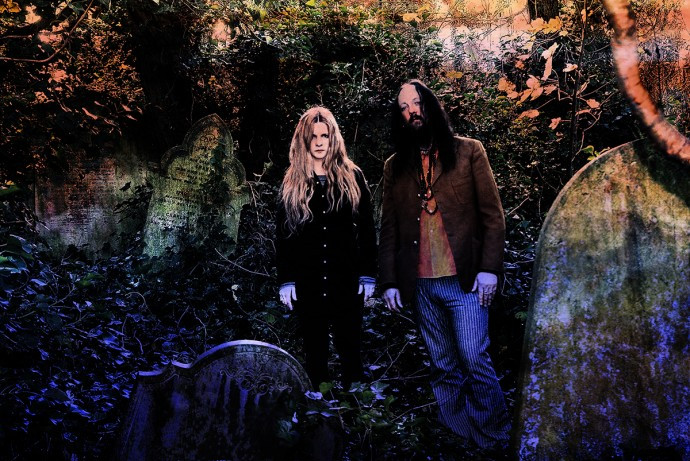
Voodoo Ritual with Pombagira
Okay, everyone knows that vodun (meaning “spirit” in the Fon and Ewe languages) is practiced by the Ewe people of eastern and southern Ghana, Togo, central Benin, and some other African regions. It is distinct from the various African traditional religions in the interiors of these countries and is the main source of religions with similar names found among the African Diaspora in the New World, such as Haitian Vodou; Puerto Rican Vodú; Cuban Vodú; Dominican Vudú; Brazilian Vodum; and Louisiana Voodoo. All of these closely related faiths are syncretized with Christianity to various degrees and with the traditional beliefs of the Kongo people and Indigenous American traditions.
Vodun cosmology centers on the vodun spirits and other elements of divine essence that govern the Earth, a hierarchy that ranges in power from major deities governing the forces of nature and human society to the spirits of individual streams, trees, and rocks, as well as dozens of ethnic vodun, defenders of a certain clan, tribe, or nation. The vodun are the center of religious life, similarly in many ways to doctrines such as the intercession of saints and angels that made Vodun appear compatible with Christianity, especially Catholicism, and produced syncretic religions such as Haitian Vodou. Adherents also emphasize ancestor worship and hold that the spirits of the dead live side by side with us in the world of the living, each family of spirits having its own female priesthood, sometimes hereditary when is it passes from a mother to her blood daughter.
Due to its image in popular culture, the general elements of voodoo rituals in our minds are rituals with voodoo dolls, which are used to put a curse on some unlucky person, and things connected to producing zombies. But I believe that the best way to know about a vodun ritual is to ask someone who took part in it, and that’s why I would like to remind you about the psychedelic doom duet Pombagira.
Pombagira (http://pombagira.bandcamp.com/) – is a goddess of the Afro-Caribbean pantheon and also an English psychedelic doom project. The duet of Pete and Caroline record their own musical interpretations of different aspects from voodoo culture. Pete is truly aware of what he sings about:
“The things I have witnessed in my life act as a great muse. I write my lyrics and imbibe my experiences within a sound. In the past I have been involved in a few magical occult orders, I have also traveled to Nepal where I have seen and met Chagri shamans, I’ve been to Haiti where I have participated in Vodou ceremonies. These are things I try to recapture when writing songs…
“To infer the existence of monotheism through a type of retention, would in one respect be true, because all Afro-Caribbean or Afro-Brazilian religions recognize an overarching God, however they all regard this entity in a very pragmatic way by saying that if he is running the universe he is way too busy to be dealing with the vagaries of human everyday life. An explanation such as this not only illustrates the detachment felt to an overarching power but also explains why people relate to the spirits, their messengers, and their convener.“
(http://www.doommantia.com/2011/05/protectors-of-downfallen-interview-with.html)
Pombagira has a great, massive song named “Baron Citadel” that’s my favorite track on their past records. This Citadel is a big bone sepulcher of Baron Samedi, one of the central deities of the voodoo cult. He is a spirit of burial grounds, a keeper of crossroads. He personifies the central point that separates the world of the living from the world of the dead. If you’d like to try another interpretation of the Baron’s image, then I can also advise you of the traditional doom band Spiritus Mortis (Finland). You can easily find their song named “Baron Samedi”; it is also a really solid track.
A few years ago Pete and Caroline recorded the album Maleficia Lamiah, and Pete gave this next comment about the new stuff:
“Throughout Maleficia Lamiah we’ve attempted to replicate the course of Vodou ceremonies with the different moods in position and place enhancing trance like states one experience’s when being ridden by the lwa. Therefore, it would be erroneous to simply conclude that all we do is play music; there are deeper and far more fascinating aspects to the way our compositions are created“.
(http://www.occultrock.com/2013/03/pombagira-drums-of-voodoo-charms-of.html)
Some of the necessary elements of voodoo rituals are: protective talismans and amulets, an offering (such as a rooster, a goat, rum, tobacco, grains), black candles, frenetic dances, and drums, lot of drums!
You can perform rituals in any place sanctified in certain way.
Consequences: success in work, business, or personal life.
Side effect: possession by loa spirits or transformation into a zombie.
Pombagira – Baron Citadel
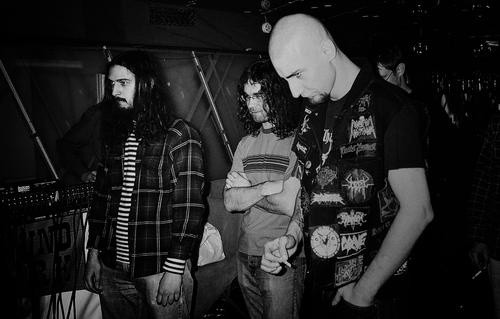
Aghori Ritual with The Moon Mistress
Aghori are ascetic Shaiva sadhus. They are known to engage in post-mortem rituals. They often dwell in charnel grounds, have been witnessed smearing cremation ashes on their bodies, and have been known to use bones from human corpses for crafting skull bowls (which Shiva and other Hindu deities are often iconically depicted holding or using) and jewelry. Because their practices are intensely Shaiva, they are generally revered and opposed. Isn’t it doomy enough in itself?!
Many Aghori gurus command great reverence from rural populations as they are supposed to possess healing powers gained through their intensely eremitic rites and practices of renunciation and tápasya. They are also known to meditate and perform worship in haunted houses. They practice an ascetic way of life, yet that doesn’t stop them from consuming alcohol and drugs to perform their sacred tasks. If you’d like to watch some close-to-life video, then try the Tamilian movie “I’m God” (Naan Kadavun)” — an absolute sludge doom story. And as Bhajravananda writes: “Do meditations upon wastelands, upon ruined houses, upon wrecked things, upon ill ones, upon dead bodies. Do it considering wisdom and teachings of gurus, and then through this you’ll understand the core and become free from everything that hurts and enslaves”.
Moscow-based psychedelic doom formation The Moon Mistress (http://themoonmistress.bandcamp.com/) has dedicated to the Aghori a song named “Cremation Meditation”, a powerful, hypnotic track filled with dark boiling energies. The Moon Mistress is often compared with such bands as Electric Wizard, but they can’t be blamed for engaging in sheer imitation. The song has a really meditative rhythm and air-tight riffs that make it easy to understand the heart of Aghori teachings.
The lyrics describe the outer aspects of dark rituals of zealous yet twisted worship to Shiva and his Maha Shakti, and the red and black colours of the CD inlay emphasize the general mood of this song and of the whole album. Maybe you’ll find your truth and gain some experience through these distorted tunes, through these torturous visions and the ash and dirt of sound. It makes me sad, but The Moon Mistress changed their name to Dekonstruktor a year ago, and accordingly they have also made their music more dirty, more painful, and more heavy. But right now I welcome you to an Aghori trance.
Some necessary elements: skulls, dead bodies, alcohol drinking, opium, attributes of Shiva.
You can perform the ritual in the places mentioned above — cemeteries, abandoned buildings, wastelands.
Consequences: enlightenment, cell in an asylum, good trips.
Side effect: hangover, infections, intoxication, bad trips.
The Moon Mistress – Cremation Meditation
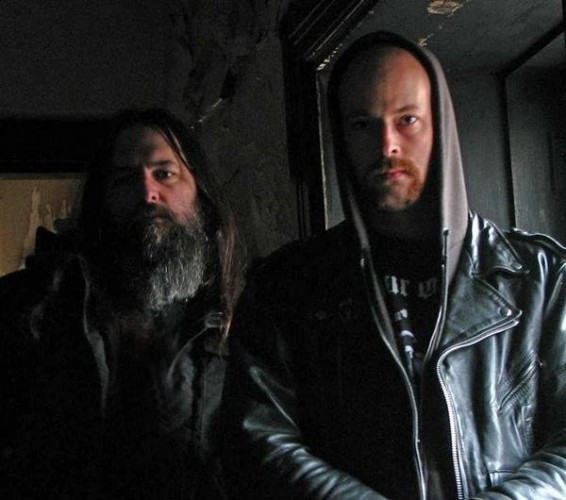
Black Mass with Hour of 13
A Black Mass is the most famous and common ritual for metal bands of all subgenres. It has a lot of attractive pop attributes: naked priestess, naked victim, goat head, torches, candles, and — optionally — drugs. But what is a Black Mass? It is characterized by the inversion of the Traditional Latin Mass celebrated by the Roman Catholic Church. The history of such rituals is unclear before the modern era. The Black Mass was allegedly celebrated during the Witches’ Sabbath.
The clarity of the celebration of the Black Mass in medieval times is imprecise; some sources referring to Black Masses during the medieval period appear to be lurid manuals that seem to have been written in Latin for witch-hunters, such as the Malleus Maleficarum (1486) and the Compendium Maleficarum (1608). There are arguments claiming that the Black Mass served solely as a shock method used to accuse enemies for several reasons, but there also remain various sources claiming that it was practiced throughout Western history and currently in the modern era for the sole purpose of Satanic worship and sacrifice in ridicule of Christianity.
H.T.F. Rhodes’ popular book, The Satanic Mass, published in London in 1954 (American edition in 1955), was a major inspiration for modern versions of the Black Mass, when they finally appeared. Rhodes claimed that, at the time of his writing, there did not exist a single first-hand source that actually described the rites and ceremonies of a Black Mass.
Anton Szandor LaVey, who published his Satanic Bible in 1969, gave a hint: “The usual assumption is that the Satanic ceremony or service is always called a Black Mass. A Black Mass is not the magical ceremony practiced by Satanists. The Satanist would only employ the use of a Black Mass as a form of psychodrama. Furthermore, a Black Mass does not necessarily imply that the performers of such are Satanists. A Black Mass is essentially a parody on the religious service of the Roman Catholic Church, but can be loosely applied to a satire on any religious ceremony”.
Of course, it was only a question of time when the Black Mass would appear in the music of the newborn rock scene. The first was a 13-minute recording of a full-length “Satanic Mass” made by the U.S. band Coven. Coven’s Satanic Mass, part of their stage show beginning in 1967, was expanded and included on their 1969 record Witchcraft Destroys Minds & Reaps Souls, together with the full published text. On the album cover, it is stated that they spent a long time researching the material, and to their knowledge it was the first Black Mass published in any language. The result was eclectic, drawing chants and other material from numerous sources, including two medieval French miracle plays, Le Miracle de Théophile and Jeu de Saint Nicolas, both of which contain invocations to the Devil in an unknown language.
These chants, along with other material on the album, could be found in books on witchcraft popular in the ’60s, notably Grillot de Givry’s Witchcraft, Magic and Alchemy (originally published in France in 1929). A large portion of the English dialogue was taken verbatim from Dennis Wheatley’s 1960 occult novel, The Satanist, in which the female protagonist is initiated into a Satanic cult. Additionally, the recording, while using a couple of the Latin phrases the Church of Satan was already making popular, also added a substantial amount of church Latin, in the form of Gregorian chants sung by the band, to create the genuine effect of the Catholic Latin Mass being inverted and sung to Satan.
But Russian psychedelic writer Viktor Pelevin supposes that the “western form of Satanism is hopeless because its central image is a goat’s muzzle inscribed in a pentagram… In short, it isn’t evil, but animal husbandry which could be interesting mostly for farmers”.
Multi-instrumentalist Chad Davis and charismatic vocalist Phil Swanson recorded a self-titled album Hour of 13 (http://hourof13.bandcamp.com/) in 2007. It is a very well-composed mix old old school heavy and doom metal with lyrics tagged as “occult” or “satanic”. The songs’ texts tell different stories of all things that are dear to the hearts of diehard metalheads and horror movie fans; there are witches, sin, blood, dark rituals, and evil in a general sense. So it’s clear why this album, with artwork depicting a shrouded figure in front of Baphomet, was highly appreciated by listeners of all ages.
Opening track “Call to Satan” is a damned catchy incantation to dark forces, but the problem is that Hour of 13’s ritual was deprived of the most appealing elements. Instead of naked women on and around the altar, we get a less interesting algorithm: “in the circle here I stand / naked in wait in the pentagram / with sacred blade self mutilate / to my own wounds I masturbate / in a sweat and semen soaked / surroundedhaze of insence smoke”. I’m not sure you expected this.
Phil Swanson said that playing in an occult band, he draw the inspiration from old bands like Angel Witch, Christian Death, Coven (thrash), Talon (aka Sedition), and Satan’s Massacre: “Their music and lyrics did help me to understand deeper source of “satanic panic” of 70-80s, which was a warm up by bands who created the basic elements of this genre“.
Some necessary elements: ritual knife, ritual altar, ritual candles, some naked women (preferably), rich imagination.
You can perform the ritual wherever you want, but forlorn chapels and old mansions are the best options.
Consequences: world / infernal power, fame, money, and other boring stuff.
Side effect: possession by demons, imprisonment.
Hour of 13 – Call to Satan
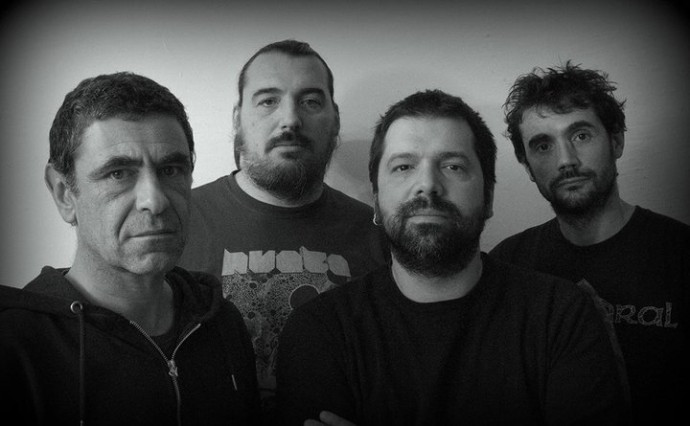
Sabbath with Barabbas
Christian church services take many forms, and these rituals sometimes differ from one congregation to another. Also, Catholic rites are/were used in twisted way in “Satanic masses”… Oh, by the way, we’re talking about doom here, and doom was started by Black Sabbath. As the Sabbath is supposed to be the seventh and sacred day in the Hebrew tradition, it is commanded by God to be kept as a holy day of rest. Among Wiccans, their pagan festivals are also referred as sabbats. It seems that this term was passed down from the Middle Ages when the terminology of the Jewish Shabbat was commingled with that of heretical celebrations (such as the witches’ sabbath). You see — that’s a really knotty story!
A kind of sabbath ritual — see it however you want — is revealed in the new album of French brothers in doom Barabbas , Messe pour un chien (https://barabbas77.bandcamp.com/album/messe-pour-un-chien). The reverend brothers often resort to Christian symbolism that could easily explain the presence in their track list of such songs as “Messe pour un chien”(“Mass for a Dog”), “Priez!” (“Pray!”), or “Le Sabbat Dans La Cathedrale” (“Sabbath in the Cathedral”). But I feel that we need is a comment from band’s members on this topic. Saint Rodolphe (vocals) says:
“We’re just like everybody, we’re subject to mood swings and our songs reflects our many states of mind. ‘Le sabbat dans la cathédrale’ is quite a party song, it’s all about going crazy and partying hard because your head is so full of stuff you just need to shut your brain off and have a good time. ‘Priez !’ is indeed a sarcastic and ironic song about hope. These are humorous elements in the lyrics, but in a dark, cynical way. It’s simply what comes naturally out of our minds. We try to be honest with our lyrics, they reflect our everyday lives. We don’t want to appear like people we are not“.
One of Barabbas’ features is French lyrics, and I’m here to propose for you a translation of a few verses from the “Le Sabbat Dans La Cathedrale” psalm:
Holy beer
heavenly brewed by the good friars!
Holy beer
and the relics of Saint Mary-Jane!
solemn communion
original Eden
naked as a worm
without my prayer book
I follow the angels to the seventh heaven
essential sacraments
carnal Eucharist
come into decadence
and horny soit qui mal y pense
adorned for the bacchanalia
ready to make the Vestals dance
it’s the day of the crazy, it’s carnival
Sabbath in the cathedral!
Some necessary elements: good company, beer, wine, rum, vodka, vodka, rum, wine, beer, and some weed for medicinal purposes.
You can perform the ritual in a bar or pub or simply at home.
Consequences: hours of joy and bliss.
Side effect: day or two of suffering and hangover.
Barabbas – Le Sabbat Dans La Cathedrale
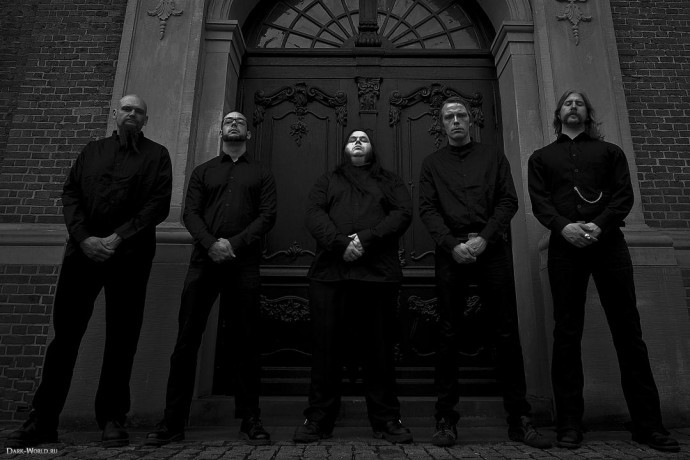
Christian Mass with Griftegård
“Mass” is one of the names by which the sacrament of the Eucharist is commonly called in the Catholic Church, Western Rite Orthodox churches, and many Old Catholic, Anglican, and Lutheran churches. Apart from “Eucharist”, other terms include the “Lord’s Supper”, the “Breaking of Bread”, the “Eucharistic assembly (synaxis)”, the “memorial of the Lord’s Passion and Resurrection”, the “Holy Sacrifice”, the “Holy and Divine Liturgy”, and “Holy Communion”. In these denominations, the term “Mass” often colloquially refers to the entire church service in general.
The term “Mass” is derived from the Late Latin word missa (dismissal), a word used in the concluding formula of the Mass in Latin: “Ite, missa est” (“Go; it is the dismissal”). “In antiquity, missa simply meant ‘dismissal’. In Christian usage, however, it gradually took on a deeper meaning. The word ‘dismissal’ has come to imply a ‘mission’. These few words succinctly express the missionary nature of the Church”.
Some Anglo-Catholic parishes use Anglican versions of the Tridentine Missal, such as the English Missal, The Anglican Missal, or the American Missal, for the celebration of Mass, all of which are intended primarily for the celebration of the Eucharist. Many Anglo-Catholic parishes in the Church of England use A Manual of Anglo-Catholic Devotion (successor to the earlier A Manual of Catholic Devotion). In the Episcopal Church USA, a traditional-language, Anglo-Catholic adaptation of the 1979 Book of Common Prayer has been published (An Anglican Service Book).
All of these books contain such features as meditations for the presiding celebrant(s) during the liturgy, and other material such as the rite for the blessing of palms on Palm Sunday, propers for special feast days, and instructions for proper ceremonial order. These books are used as a more expansively Catholic context in which to celebrate the liturgical use found in the Book of Common Prayer and related liturgical books.
You may ask me: What are you speaking about? The topic is about Dark Rituals of Doom! That’s right, and you’ll understand my choice when you listen to Griftegård.
Solemn. Sacred. Severe. These are the best epithets for the Christian Mass, and at the same time it’s the name of the first full-length album of Griftegård (https://www.facebook.com/pages/Griftegård/993078980722273).
The epic doom band Griftegård (“cemetery”) from Sweden maintained silence for about 4 years after they released a split-album with their Finnish colleagues Lord Vicar. But suddenly I’ve discovered that they’re alive and active, as Van Records is gonna release a new Griftegård 12’’ vinyl. Anyway it’s impossible for me to forget their most significant and powerful track “Charles Taze Russell”, named after the founder of what is now known as the Bible Student movement, from which Jehovah’s Witnesses and numerous independent Bible Student groups emerged after his death. Ola Blomkvist kindly illustrates his point of view:
“The sect has never been particularly big in Sweden, although everyone knows about the JW’s and their activities. Also, for the trained eye they are very easy to spot in a crowd… not that they look insane (at least not here in Sweden) or anything, but because they have THE newborn x-tian look that is impossible to mistake for anything else — clothes being not trendy, nor directly out of fashion (only… beige, or mellow in a way…), the briefcase containing the Watchtower pamphlet, the way they move and the look in their eyes….
“… I believe there are many different ways to experience divinity in life but that I am not in the position of telling anyone which way is right for him/her. What I can say though is that I believe outer acts of worship, such as candle lighting rituals and other things done to pay respect to traditions, are very separate from real soul-searching. Once again, the inner, subjective reality can be, and is, as real and as objective as outside reality…
“There is an old Swedish 18th-century Psalm called “Ju större kors, ju bättre Kristen”, meaning ”The bigger the cross, the better the Christian”, and there is something to that grand title for sure. There’s much truth to be extracted from the process of alchemy that is our Via Dolorosa walk of life, but what remains to be seen (by whom?, one might wonder…) is whether or not one has suffered in vain in the end – life comes without guarantees of happy endings… thus it might be best to just live in the now… but who am I to say? The only thing I know is that when real insight lights up your inside it does not ever fade, and I guess that is the only thing one can strive for… and without hardships one can never hope to reach any true insights at all. Small bits of truth might just lead to revelations….“
(http://www.doommantia.com/2011/01/sacred-sounds-of-griftegard-interview.html)
I’m sure that we need a Griftegård song here — amongst heathens and unbelievers. Listen here how Thomas Erickson chants his lithanies of bitter grief and enlightenment from his cathedra with true and zealous passion, as if he is a real preacher who calls to his congregation as the mournful riffs of Ola Blomkvist tell about burden on the road to salvation.
Some necessary elements: faith, priest, cross.
You can perform the ritual in church in a case there’s a priest.
Consequences: redemption and eternal life in heaven.
Side effect: suffering in mortal life optionally.
Griftegard – Charles Taze Russell
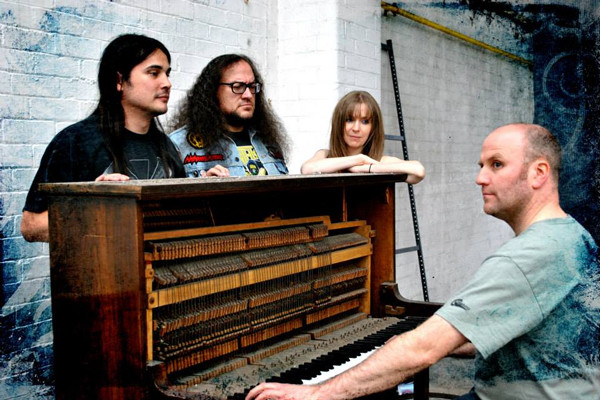
Ancient Gods Ritual with Arkham Witch
Although the Chtulhu myths were conceived by the genius of Lovecraft about 100 years ago, these stories are tightly rooted in modern culture and have become an important part of it. The most famous of the ancient cults is a cult of Chtulhu (with all our respect to Dagon). Do you remember how it was?
It started with reports of “outre mental illnesses and outbreaks of group folly or mania” around the world (in New York City, “hysterical Levantines” mob police; in California, a Theosophist colony dons white robes to await a “glorious fulfillment”). At the same time a sculpture was found — a statuette composed of an unidentifiable greenish-black stone, representing a “…thing, which seemed instinct with a fearsome and unnatural malignancy, was of a somewhat bloated corpulence, and squatted evilly on a rectangular block or pedestal covered with undecipherable characters”. Soon after police started searching for several women and children who had disappeared from a squatter community. The police found the victims’ “oddly marred” bodies used in a ritual in which almost 100 men — all of a “very low, mixed-blooded, and mentally aberrant type” — were “braying, bellowing, and writhing” and repeatedly chanting the phrase, “Ph’nglui mglw’nafh Cthulhu R’lyeh wgah’nagl fhtagn”.
“The central idea of their loathsome faith”: “They worshipped, so they said, the Great Old Ones who lived ages before there were any men… and… formed a cult which had never died… hidden in distant wastes and dark places all over the world until the time when the great priest Cthulhu, from his dark house in the mighty city of R’lyeh under the waters, should rise and bring the earth again beneath his sway. Some day he would call, when the stars were ready, and the secret cult would always be waiting to liberate him.”
Spending the first months in an asylum, I never stopped to think that I did wrong performing Chtulhu-worshiping rituals on a seashore of Saint-Petersburg… Indeed I expected to gain a result which was described in Arkham Witch’s “Lord of R’lyeh”:
A shape immortal, a dreaming god
Tentacled horror, raise pseudopod
And ive the hail, dark rage unfurled
Servants of Chaos – to take the worlds!
Upon the surface, Cthulhu rise
And once acknowledged, the fear dies
Through Arkham madness, and lunacy
In gibbous frenzy – we are free!
Sons (and one daughter) of Albion, well-known heavy metal band Arkham Witch (http://metalonmetalrecords.bandcamp.com/album/arkham-witch-legions-of-the-deep) have their own obligations before the old gods from the stars. Their second full-length record Legions of the Deep includes the super-killer song “Kult of Kutulu” performed in an uncompromising and ever-young NWOBHM style. “Kult of Kutulu” was inspired by Alan Moore’s comic book “Neonomicon”. Moore used a lot from the background of Lovecraft’s story, including repressed sexuality and sheer rasicm The song has a chaotic, frenzied, driving energy, as it brings to life pictures of heathen ritualistic dances in the tones of a sacramental chorus: “Ph’nglui mglw’nafh Cthulhu R’lyeh wgah’nagl fhtagn”.
Arkham Witch frontman Simon says:
“I think our Lovecraftian leanings differ from most bands in that we really do focus on the ‘pulp’ aspect of Lovecraft, rather than the desired effect of the literary weird tale. Some bands aim for that, using discordance and eerie atmosphere to evoke the spirit of the old ones, we try and do it through the more esoteric means of using his old gods and ancient ones as a kind of shorthand to rock! I always loved the idea of the overt cheery rock song carrying covert messages of doom and destruction as we gleefully sing along to our own imagined demise — I don’t know why! I think one of my favorite Lovecraftian songs is Morbid Angel’s ‘Angel of Disease’, which, even in it’s death metal form, has a really good cheery singalong chorus!“
(http://templeofperdition.blogspot.ru/2013/06/cthulhu-doom-quiz-pt1-arkham-witch.html)
Some necessary elements: sacrifices, lots and lots of sacrifices, cyclopic monoliths, statues of unidentifiable greenish-black stone, healthy mind or total lack of it.
You can perform the ritual on a seashore or in an ancient temple.
Consequences: “…mankind would have become as the Great Old Ones; free and wild and beyond good and evil, with laws and morals thrown aside and all men shouting and killing and revelling in joy. Then the liberated Old Ones would teach them new ways to shout and kill and revel and enjoy themselves, and all the earth would flame with a holocaust of ecstasy and freedom”.
Side effect: horrible death, insanity, a few years in comfortable asylum.
Arkham Witch – Kult Of Kutulu
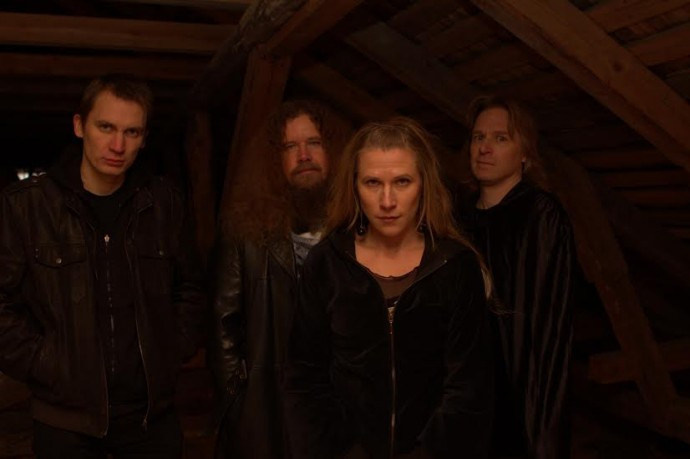
Beltane with Serpent Warning
Beltane is the Gaelic May Day festival. Most commonly it is held on 30 April, but sometimes on 1 May, or about halfway between the spring equinox and the summer solstice. Historically, it was widely observed throughout Ireland, Scotland, and the Isle of Man. In Irish it is Bealtaine, in Scottish Gaelic Bealltainn, and in Manx Gaelic Boaltinn or Boaldyn. It is one of the four Gaelic seasonal festivals — along with Samhain, Imbolc, and Lughnasadh — and is similar to the Welsh Calan Mai. And don’t forget such analogs as Walpurgis Night.
Walpurgis Night is the English translation of Walpurgisnacht, the German name for the night of 30 April, so called because it is the eve of the feast day of Saint Walpurga, an 8th-century abbess in Germany. In German folklore Walpurgisnacht is believed to be the night of a witches’ meeting on the Brocken, the highest peak in the Harz Mountains, a range of wooded hills in central Germany between the rivers Weser and Elbe. The first known written occurrence of the English translation ‘Walpurgis Night’ is from the 19th century. Local variants of Walpurgis Night are observed across Europe in the Netherlands, Germany, the Czech Republic, Sweden, Lithuania, Latvia, Finland, and Estonia. In the United States, Walpurgisnacht is one of the major holidays celebrated within LaVeyan Satanism and is the anniversary of the founding of the Church of Satan. But we’ll talk about that another time…
Let’s return to our topic. Beltane is mentioned in some of the earliest Irish literature and it is associated with important events in Irish mythology. It marked the beginning of summer and was when cattle were driven out to the summer pastures. Rituals were performed to protect the cattle, crops, and people, and to encourage growth. Special bonfires were kindled, and their flames, smoke, and ashes were deemed to have protective powers. The people and their cattle would walk around the bonfire, or between two bonfires, and sometimes leap over flames or embers. All household fires would be doused and then re-lit from the Beltane bonfire. Doors, windows, byres, and the cattle themselves would be decorated with yellow May flowers, perhaps because they evoked fire. In parts of Ireland, people would make a May Bush; a thorn bush decorated with flowers, ribbons, and bright shells. Holy wells were also visited, while Beltane dew was thought to bring beauty and maintain youthfulness. Many of these customs were part of May Day or Midsummer festivals in other parts of Great Britain and Europe.
I’ve found a song about Beltane carefully listening to one of the best traditional doom albums of 2014. The Finnish band Serpent Warning (https://www.facebook.com/serpentwarning) recorded the song “Luna” for their debut self-titled album which was released by I Hate Records about a year ago. And as the band’s former vocalist Samuel Worminus has left Serpent Warning to return to his other projects and freed the microphone for Suvi Laaninen, I asked a question about this track to Antti Koponen, songwriter. Here are his words:
“It was the first song I wrote for Serpent Warning and it has a very special meaning, if only because of that. The song itself came out of my wanderings in the forests and thoughts that may manifest themselves within the woods. The actual music was something that I thought up, thinking that I´d like to do something in the vein of old Celtic Frost (not sure if I succeeded…). And maybe also a bit reminiscent of Blood Ceremony, as I was listenning to them at the time. “Luna” is supposed to conjure up a bit of mythical, medieval feeling of sorts. At least that’s what I hoped for!!! Maybe it has a bit of the film Wicker Man, in it too. We also have a new song called “Pagan Fire”, which will hopefully turn up on our forthcoming album. That song can be somewhat loosely linked to “Luna”, not as a sequel or anything, but in a way of the thought behind both songs; elements of nature, forests, and deserts”.
Some necessary elements: druid priest, May flowers, some offerings.
You can perform the ritual in fields, sacred groves, and forests.
Consequences: good harvest, luck, and blessings of pagan gods.
Side effect: considering the Wicker Man film… you may become a burnt offering.
Serpent Warning – Luna
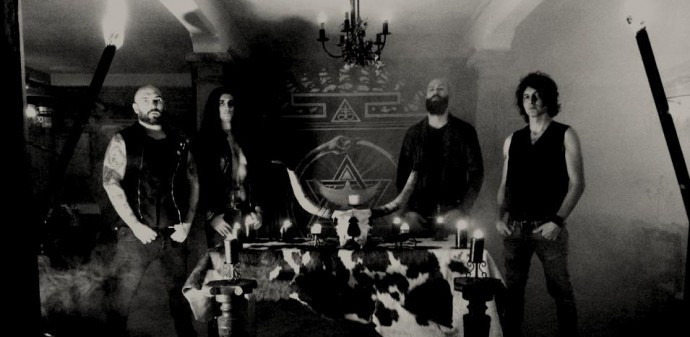
Shamanic Rituals with Caronte
In the last part of this topic I would like to draw your attention to a few different practices that were united in one album by the powerful and ambitious Italian band Caronte.
First, I need to remind you about Goetia. Goetia (Medieval Latin, anglicised goety /ˈɡoʊ.ɨti/, from Greek γοητεία goitia “sorcery”) refers to a practice that includes the invocation of angels or of demons, and usage of the term in English largely derives from the 17th-century grimoire The Lesser Key of Solomon, which features an Ars Goetia as its first section. It contains descriptions of the evocation of seventy-two demons, famously edited by Aleister Crowley in 1904 as The Book of the Goetia of Solomon the King. Goetic Theurgy, another practice described in The Lesser Key of Solomon, is similar to the book’s description of Goetia, but is used to invoke aerial spirits.
Second, let’s learn about the term “Wakan Tanka“. In the Lakota way, this is the term for “the sacred” or “the divine”. This is usually translated as “The Great Spirit”. However, according to Russell Means, its meaning is closer to “Great Mystery”, as Lakota spirituality is not henotheistic. Before their attempted conversion to Christianity, the Sioux used Wakȟáŋ Tȟáŋka to refer to an organization of sacred entities whose ways were mysterious: thus, “The Great Mystery”. It is interpreted as the power or the sacredness that resides in everything, resembling some animistic and pantheistic beliefs. This term describes every creature and object as wakȟáŋ (“holy”), or having aspects that are wakȟáŋ.
And last but not least… What do you know about shamanic practices?
Well, true to say, we can easily find most of the dark rituals which we observe in this article in two albums by the Italian occult doom band Caronte. They have all types of rituals for followers of the Left Hand Path, but I like their fastest track, “Wakan Tanka Riders”, from their second release Church of Shamanic Goetia (released by Van Records in 2014) most of all. Henry Bones, Caronte;s guitar master, revealed details of the band’s conception in our interview:
“Just before writing Church of Shamanic Goetia, our studies were mostly focused on shamanism, more specifically on “Core Shamanism”, as Michael Harner defines it. M.H. theorizes that all of the Shamanic practices have a common ground even if they come from different places and never really crossed paths as such. The reason why most of our lyrics are inspired by the Native Americans is that they always had, in each tribe, a warrior spirit and a vision of death which is something we also share. We feel closer to this spiritual approach more than any other… All of us in the band have a connection with occult and magic practices. Caronte as a musical project can be considered magic. Our route goes back to the left hand path, the evolution of our interior journey to expand and merge to the cosmos — this channelling through sound, mantras, the studies of shamanism, and pilgrimages that are the main subject of our latest album. If you can call forth the light, you will no longer need to see“.
(https://www.nocleansinging.com/2015/04/01/an-ncs-interview-henry-bones-caronte/)
Some necessary elements: depends on that you want to gain.
You can perform the ritual(s) at a Caronte gig.
Consequences: inner evolution.
Side effect: unpredictable.
Caronte – Wakan Tanka Riders
http://www.youtube.com/watch?v=XLOhKu7t-R0

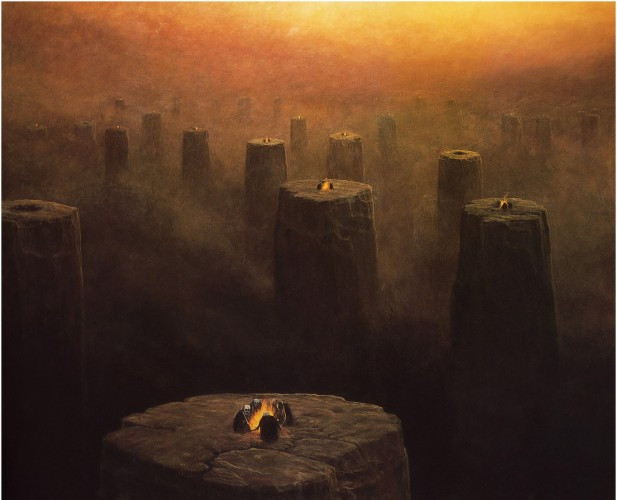
Great job! This is a very cool read! I really dig Barabbas 🙂
Saw The Moon Mistress perform at a gig in blore India, and that too with the bassie not there. They still sounded killer and i was conveniently crushed by the ten ton riffs. Met and talked with Mitya(drummer). Really cool dudes.
great work, my friend; i am not yet done reading but concerning Voodoo/B. Samedi, i’d like to suggest the occult band Death SS (Steve Sylvestre); also one of the first elaborators of extreme black/power metal beginning in Italy in the late ’70s
Great, great reading ! Full of in-depth informations, and a cool way to discover the “hidden” philosophy behind those bands. Many thanks to the Reverend Aleksey ! Waiting for the part 2, hope it will be published soon.
Thanks for feedback comrades!
Merci, frère Stéphane!